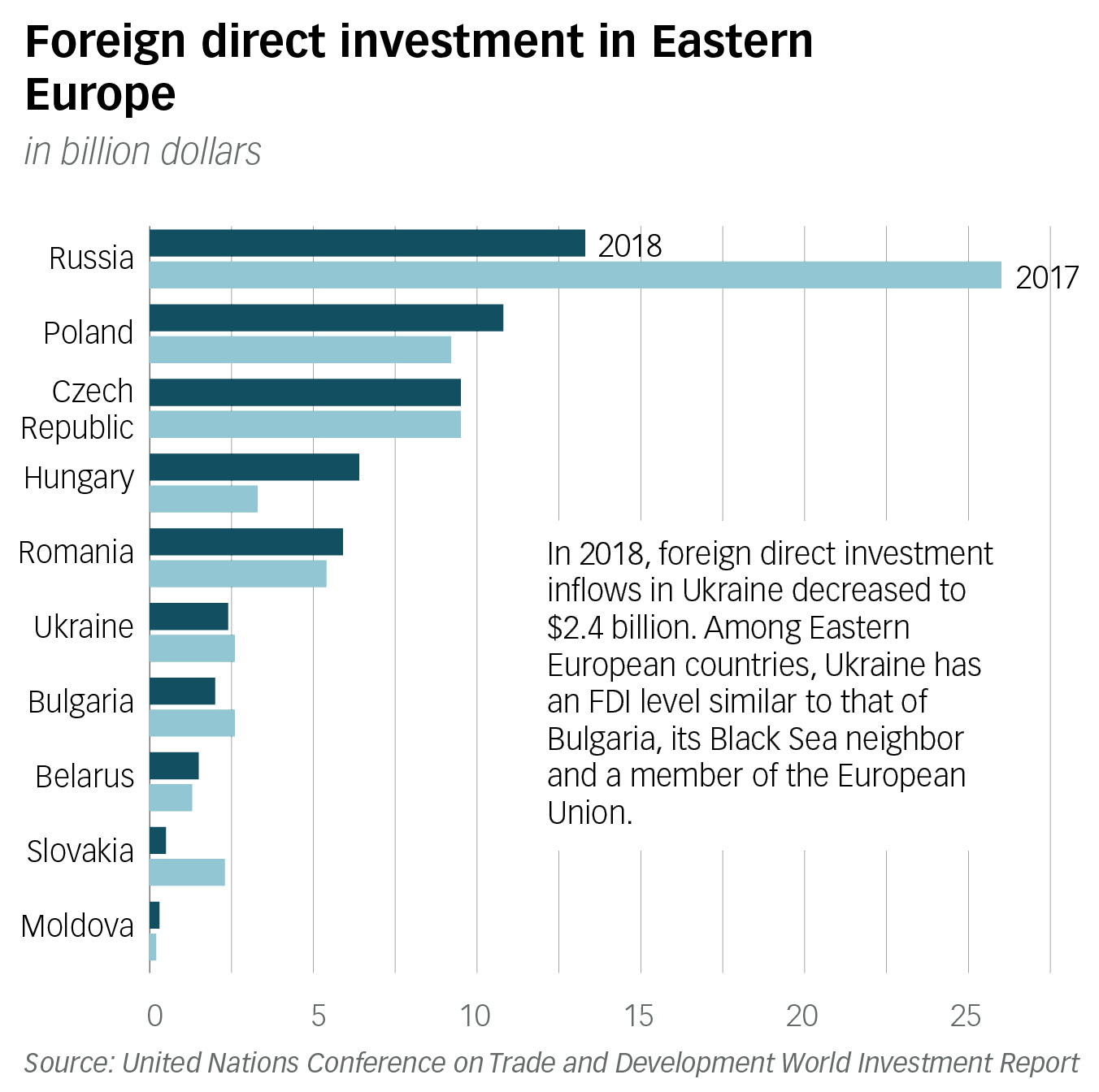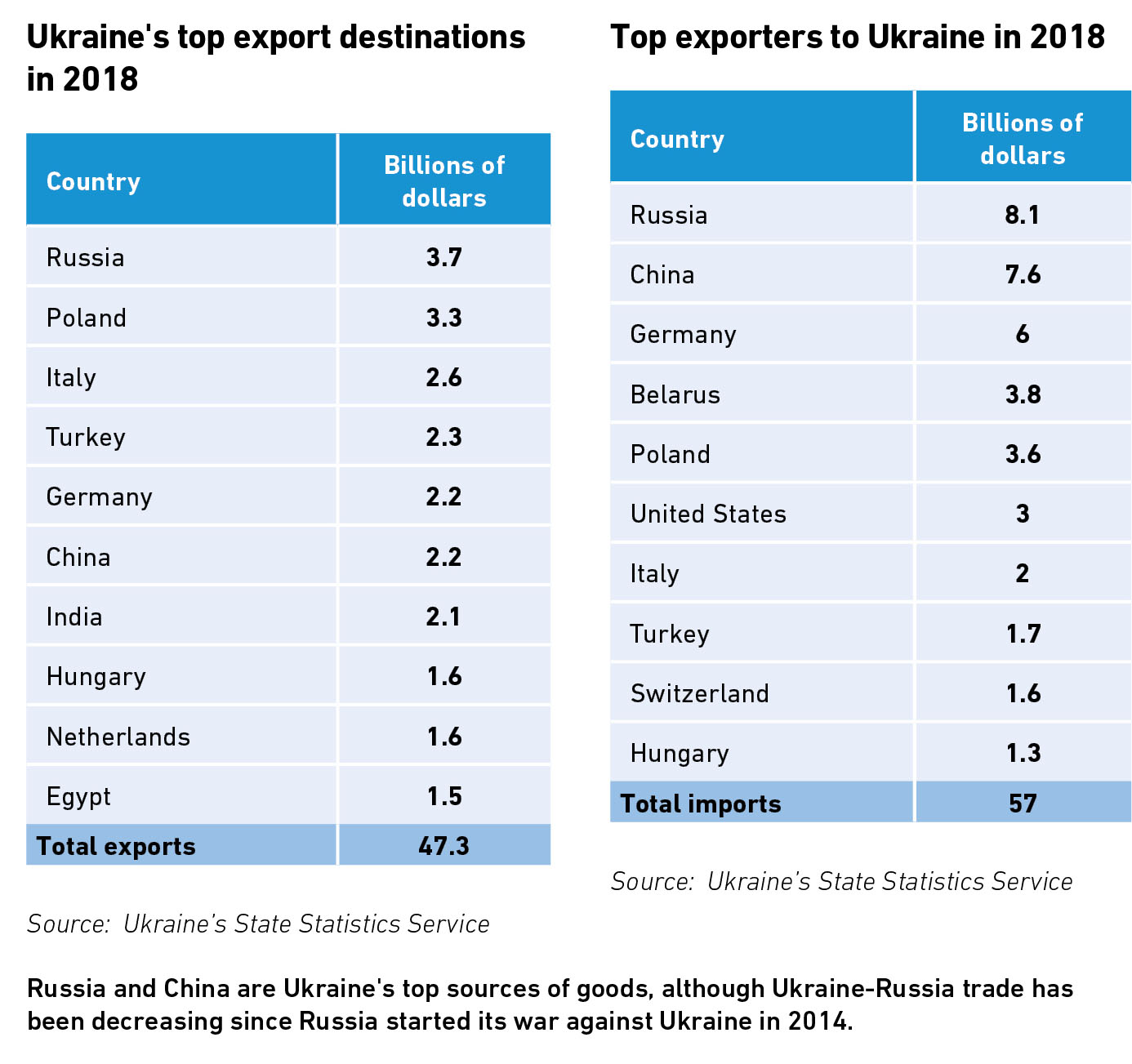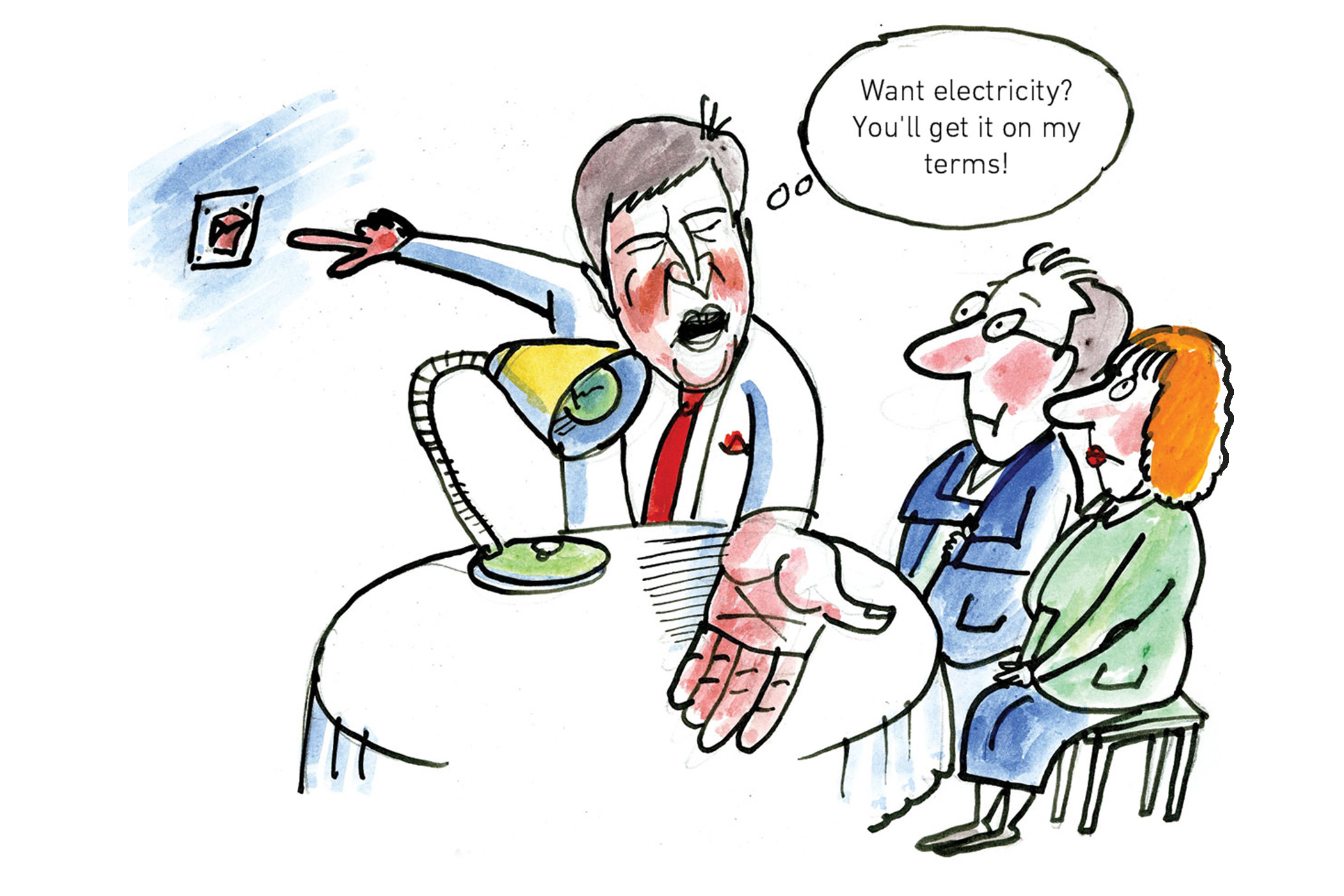Editor’s note: Our 2019 Doing Business in Ukraine magazine is out. Get a PDF version online or pick up a copy in Kyiv.
They’re some of the most powerful companies in Ukraine: regional electricity suppliers known as oblenergos in Ukrainian. And come July 1, they may lose much of their power as new market regulations come into force.
But as with many top business sectors in Ukraine, there are oligarchs involved. They are doing their best to hold onto these energy monopolies.
Oblenergos and oblgazes — a term referring to regional gas distribution monopolies — have long been standing in the way of a fair and transparent energy market. These regional distributors are responsible for supplying enterprises and households alike with electricity and gas, making them particularly valuable to their owners.
And even though a state-led national commission oversees pricing policies, the regional distribution companies still have a number of ways to influence the market.
Energy ownership
Ukraine’s electricity distribution is still largely controlled by Russian and Ukrainian oligarchs, often in partnership with each other.
Until recently, VS Energy — a company headed by nationalistic Russian lawmaker Alexander Babakov — had majority stakes in seven oblenergos before selling two of them to Ukraine’s richest man, Rinat Akhmetov, on May 16.
Akhmetov also owns DTEK, which controls over 80 percent of coal production used to produce energy in Ukraine. The olbenergos’ sale, and the resulting vertically integrated monopoly, cements Akhmetov’s position as the most powerful player on Ukraine’s energy market only weeks before energy reform is intended to de-monopolize the energy sector.
So far, regulation hasn’t restrained Akhmetov.

On April 25, the Ukrainian Anti-Monopoly Committee ruled in favor of the oligarch, allowing him to buy majority stakes in Kyivoblenergo and Odesaoblenrgo.
The committee justified its decision by stating that Akhmetov is only buying the distribution network, which is responsible for carrying energy from producers to consumers, and doesn’t have the right to sell energy to consumers.
Akhmetov now controls seven out of Ukraine’s 25 oblenergos, together accounting for 45 percent — or 55 billion kilowatt hours — of the country’s total electricity distribution.
According to Andriy Gerus, a presidential representative to the Cabinet of Ministers, Akhmetov might acquire the remaining oblenergos controlled by VS Energy, which would increase the oligarch’s share on the energy distribution market to 57 percent.
Oleksiy Feliv, managing partner at Integrites, said that, under the new system, oblenergos might become an attractive asset as their value will increase.
“The transparent pricing system might result in the capitalization of oblenergos rising,” he said.
On May 13, Natalya Yemchenko, the spokesperson for SCM Holding, which is owned by Akhmetov, published an article in support of DTEK’s acquisition of the two oblenergos. Europe has similar natural monopolies, she claimed.
“In Portugal, 84 percent of (electricity) networks are owned by a private company, Energias de Portugal. In Italy, 70 percent is owned by Enel. In Spain, Iberdrola and Endesa Energia own together 78 percent. E.ON in Germany (owns) 48 percent. It is like this everywhere,” Yemchenko wrote.
But Ariel Cohen, a senior fellow at the Atlantic Council’s Global Energy Center, says there is a difference: the environment in which these companies operate.
“Europe does not struggle with same issues of capacity, corporate governance, corruption, and over-regulation (compared to Ukraine),” Cohen told the Kyiv Post in an emailed comment.

EU-Ukraine differences
According to EU regulations, European energy companies have the option of either having an independent transmission operator or unbundling the ownership structure. Most European companies choose the first option. In addition, market players are overseen by both national regulatory agencies and EU institutions.
The structure of company ownership is also different in Ukraine and EU countries. For example, Energias de Portugal’s rules allow a single shareholder to have no more than 25 percent of voting rights. Enel is owned partly by the Italian government and partly by institutional investors. And all of the companies’ shares are freely traded on stock markets.
DTEK is fully owned by Akhmetov.
Other players in Ukraine’s electricity distribution field include Russian-Ukrainian businessman Konstantin Grigorishin, who has a stake in 11 oblenergos that account for at least 15 percent of Ukraine’s electricity distribution.
Oligarch Ihor Kolomoisky controls 4 percent of the distribution market, while businessmen brothers Ihor and Hryhory Surkis control an additional 7 percent. The state owns 17 percent, but most often in partnership with the abovementioned oligarchs, who own minority shares but have major influence in decision-making.

Oblgazes
When it comes to oblgazes, 75 percent of all gas transmission companies are owned by oligarch Dmytro Firtash, who is fighting U.S. bribery charges from exile in Austria. He denies wrongdoing.
As of 2019, Firtash controls 20 oblgazes through his Regional Gas Company. In 2018, they transported 20 billion cubic meters of gas, or over 70 percent of the country’s total.
On April 11, Yuriy Terentyev, head of the Anti-Monopoly Committee, wrote on Facebook that all 20 oblgazes owned by Firtash are being investigated by his organization due to suspicions of abuse of power.
The National Commission for State Regulation of Energy and Public Utilities (NERC) launched a probe supported by the government into allegations that the oblgazes were overcharging private consumers. The commission found this claim to be true and fined 12 oblgazes.
According to state-owned gas monopoly Naftogaz, the oblgazes overcharged consumers by 5–10 percent between December and January. The Regional Gas Company did not respond to a request for comment.
But on June 5, a court ruled that the fines were illegal and overturned the commission’s decision.
Overcharging is not the only issue. Because the government keeps household prices below market rates, distribution companies have been known to use the price difference between household and industry consumers to make substantial illegal profits.
Anders Aslund, an economist and senior fellow at the Atlantic Council, estimates that around a third of gas sold to domestic consumers in Ukraine may actually be getting resold to industries.
“Politicians continue to comment on what prices of electricity or gas ought to be, as if these are political decisions rather than determined properly by the market,” Edward Chow, a senior associate at the Center for Strategic and International Studies, told the Kyiv Post via email.
Market prices for both household and industry consumers should be the primary objective of energy reform and integration with Europe, according to Chow.

Oligarch Rinat Akhmetov controls seven out of 25 electricity distribution companies. Those firms transmitted over 45 percent of electricity in 2018.
Unbundling oblenergos
In 2017, the parliament supported a law on reforming the energy market. Its new regulations will enter into force on July 1.
The reform is meant to bring Ukraine’s legislation in line with EU requirements. The new law gives consumers the right to choose a seller, something that will be achieved by dividing the oblenergos into two separate companies — an electricity seller and a network manager. In that way, it aims to introduce market prices instead of regulated ones for industry consumers.
As for oblgazes, a gas market law came into force in 2015, stating that oblgazes must be unbundled by separating pipeline managers and gas sellers. But four years later, oblgazes are still non-transparent. The sellers and pipeline managers continue to be controlled by a single owner, while the network manager is constantly blocking other players from entering the gas selling market.
The unbundling of oblenergos may yield a similar result.
According to Cohen, “unbundling is certainly the right path for the country’s energy security in theory.” However, he added that, when it comes to Ukraine, theory and practice are very different things.
“If done with proper oversight and transparency, Akhmetov will not have much leverage for market manipulation,” Cohen said.
But Cohen says he will believe it when he sees actual results.
—-
Top countries by renewable energy capacity
(in gigawatts, 2017)
China — 600
USA — 230
Brazil — 128
Germany — 113
India — 105
…
Ukraine (2018) — 2
Source: International Renewable Energy Agency
